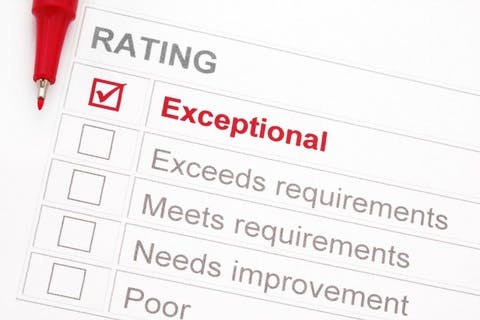The traditional performance management (TPM) process has not kept up with contemporary business challenges.
Using an outmoded performance management approach feels like driving up in a 1950-era Thunderbird to pick up a colleague — the style may be a “classic” one, but the ride won’t be very comfortable or exhilarating.
Today’s knowledge workers are more educated than ever before and have a very different relationship with work. These smart, competent employees want to feel inspired. They want their work to have meaning and an “impact” on their organizations.
Added to the challenges of a changing workforce, companies now operate in a faster paced environment with a matrix-type of structure, and often requiring their employees to work collaboratively in globally distributed teams.
Lets examine many of the assumptions of TPM. By rethinking those assumptions based upon our understanding of current organizational and employee needs, we can develop greater insight regarding which aspects of performance management need to change.
1. Goal setting
Most traditional performance management processes were designed based on the assumption that annual goal setting is an effective way to manage the business. This assumption no longer holds true.
In today’s fast-paced, constantly changing business environment, agility is the key to success. Companies need to adopt processes that enable them to keep employees focused on the right activities and also provide them with flexibility to readjust when business needs shift.
In fact, research has shown that organizations which review and revise goals more often had higher performance than organizations who reviewed goals annually or semi-annually.
Today’s work environment often requires collaboration across functions and geographies. Having employees set goals independently is out of sync with current business needs. New technology platforms enable individuals to share goals with their teammates as well as to track progress toward those goals.
This type of information sharing can help a team understand when a project may be hitting road blocks, potentially allowing other team members to pitch in to overcome obstacles.
2. The Role of the Manager
By 2020, more than half of the employees in the work force will be Millennials. Therefore, understanding the mindset of the Millennial employee is critical to rethinking performance management.
This generation values feedback from those they respect as opposed to a hierarchical model that assumes only the immediate managers’ opinions count. This suggests that it is time for organizations to reconsider what are the most valued sources of feedback for employees and what practices best fit the company’s culture.
Many employees experience frequent manager turnover through restructuring and other changes. Therefore, an effective performance management process should not rely on just one individual evaluator.
Organizational stability has been replaced by constant change. Also, many employees have dual reporting relationships, necessitating input from more than one manager.
Most organizations handle input in such scenarios in an ad-hoc fashion. However, technology solutions can now accommodate feedback from multiple individuals, including peers, as opposed to being limited to just one manager.
3. Feedback
There are several assumptions about both the pace and nature of feedback that we need to reconsider.
Most Millennial employees want ongoing feedback to stay on track and to feel assured that they are investing their efforts wisely. This generation is used to getting information when they want it; expecting immediate access to information. Thus, we need to design performance management systems that provide on-going feedback and recognition.
Most traditional management processes processes involve the dreaded annual “sit down” with a manager for a performance review, assuming that feedback once a year is sufficient. These conversations can be lopsided with the manager doing most of the talking. While we have acknowledge that there is a need for on-going feedback during the year, the annual conversation with one’s manager should be more of a dialogue than a point of information.
Feedback from the manager needs to move beyond the one-directional relay judgment to a two-way dialogue that emulates “coaching” more than “managing.” As a coach, a manager can better provide advice, guidance, and support than in the more typical performance management session. Many companies looking to transform their TPM are turning to a greater focus on coaching and development to drive performance in the organization.
4. Performance ratings
We need to challenge the assumption that we need to rate employees to let them know where they stand. If employees are engaged in regular dialogue with their manager, then they are likely to have a strong understanding of how their contributions are perceived.
While most companies don’t adhere to a forced distribution of ratings, they often try to approximate a normal distribution. Since most employees think they are “above average,” the rating process can be highly demotivating to a majority of employees.
In addition, research in the field of neuroscience suggests that inserting ratings into performance discussions “kills” the conversation.[2] Employees are geared to listening for their rating, grade or label and then not hearing virtually anything else.
A new approach
The current business environment may be better served with a goal setting process that is more agile and collaborative and by inviting feedback from individuals who have specific knowledge of the employee’s performance, regardless of their role.
Many companies have begun to explore how to have performance conversations without labeling people and ensuring a greater two-way dialogue about performance and development.
While several ideas presented in this article may represent radical shifts in thinking, it is important that all companies question the assumptions driving the process they are using. Through such questioning, organizations can better determine what type of system, tools, and approach may be most culturally appropriate and effective for their business.HR
